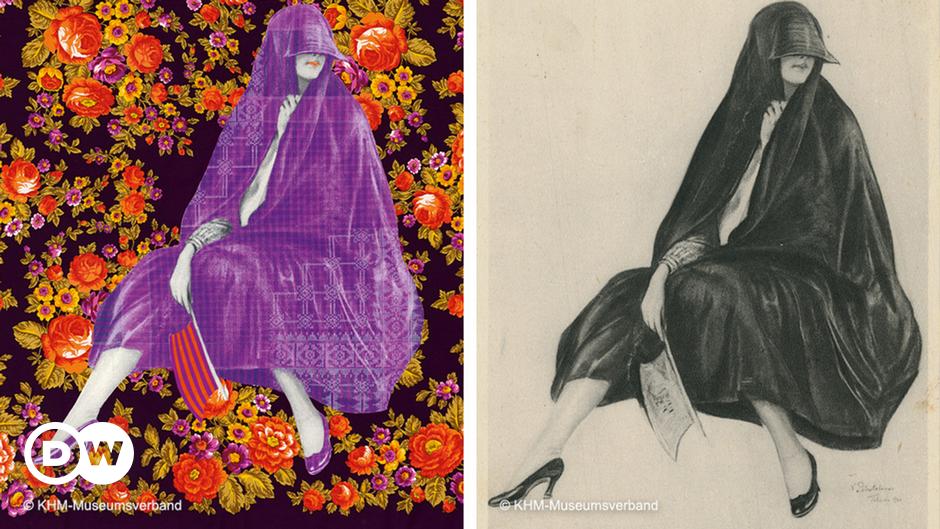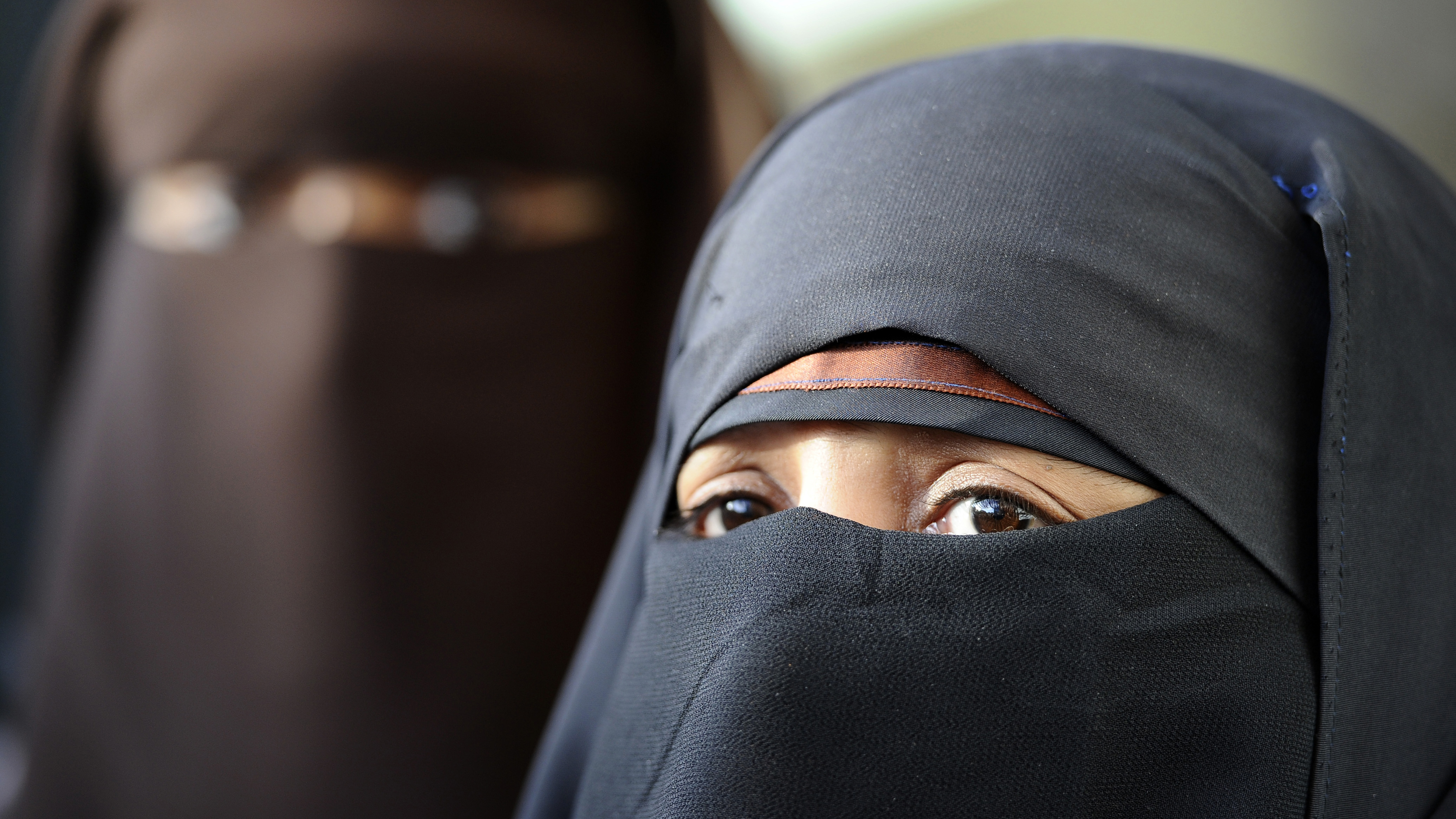History of Headscarves and Which Religions Have Used Them
To this day head coverings play a significant role in many religions including Orthodox Judaism and Catholicism. Theres information about the headscarf in Christian Jewish Muslim Nigerian and African-American traditions and about some of the present controveries in France parts of the Middle East and more.

Unveiling The History Of The Headscarf Culture Arts Music And Lifestyle Reporting From Germany Dw 17 10 2018
In The Politics of The Headscarf in The United States Bozena C.

. Headscarves have been used as an accessory for hundreds of years. Ghanaian women call theirs dukus. The first records of women wearing head coverings dates back to13th century BC.
I hope that the more people who wear wraps the more headscarves will become normalised. Headwraps are traditional attire in many Sub-Saharan African cultures. The term ḥijāb was originally used to denote a partition a curtain or was used generally for the Islamic rules of modesty and dress for females.
South African and Namibian women often use the Afrikaans word doek. The practice of people wearing head covers and veils for religious purposes is an integral part of all three monotheistic religions Christianity Judaism and Islam as well as other faiths and cultures. But the headscarf is more than just a piece in the dress code of millions of people around the world.
It is worn primarily by Muslim women for religious purposes and its style varies by culture. Orthodox Jewish women wore headscarfs to cover their hair and as a form of modesty. Yet the idea and practice of covering ones head with cloth transcends religious cultural and geographic categories.
Throughout the years it has been adopted by numerous religions from Islam to Judaism Christianity and Sikhism. Подпишитесь на наш канал в Telegram. Westfall and their co-authors demonstrate how headscarf use by Muslim-American women sheds light on American democratic pluralismWhereas scarfed Muslim women are legally protected in the United States the current Islamophobic atmosphere in the United States is a significant.
On these early times it was a matter of social hierarchy and pure rank. In the old days white headscarf used to mean the end of wars and conflicts for some nations. In Eastern Orthodox culture headscarves are worn by women while attending the church.
It is a common Arabian tradition for men to wear a shemagh or desert scarf. As it spread through the Middle East to Saharan and sub-Saharan Africa to Central Asia and to many different societies around the Arabian Sea it incorporated some local veiling. For some the hijab is worn by Muslim girls and women to maintain modesty and privacy from unrelated males.
Outside the West this traditional veil is worn by many Muslim women in the Arab world and beyond. Different traditions of religious iconography use mantles and other head-covers to symbolize purity and even saintliness. Head coverings were first written into law around 13th Century BC in an ancient Assyrian text that mandated that women daughters and widows cover their heads as a sign of piety.
It is indeed a beautiful accessory that is worn by many women. However this is not a hijab. The Yoruba in Nigeria call their artfully folded wraps geles.
Since the seventh century Islam has grown to be one of the major world religions. Headscarves and veils are commonly used by observant Muslim women and girls and required by law for women and girls in certain Muslim countries Saudi Arabia for example. It still baffles me that some people have so much hatred for a piece of fabric on a persons head.
History has seen headscarves on women across the world different cultures and religions but as it stands the headscarf has come in and out of fashion all the time. I stand with Muslimahs who love to wear their hijabs. In contrast to Islamic culture in Eastern Orthodox cultures women today often wear the headscarf very loosely so that part of the hair can be seen.
The term for headscarf in the Quran is khimār Arabic. This custom ended up being adopted by Abrahamic religion and becoming a part of every religion originated in the area. Prior to the 18th century wearing a headscarf was considered customary for Christian women in Europe African and the Mediterranean.
Often wearing a headscarf is purely known for being a religious practice but contrary to popular belief various cultures traditions and religions underline the importance of head pieces. I understand the personal and spiritual reasons for them. In much of the Western world today the word headscarf is often automatically associated with those worn by women for religious reasons especially Muslim women.
Unveiling the history of the headscarf. It is the most popular veil worn in the West. 3 Head-covers convey a message of purity and godliness to many observers.
Veiling has not historically been a significant area of contention in the United States. Classes of Islam for women and girls. Headscarves have been used for millennia.
This is a fascinating article that touches on many aspects of the history of and present state of womens choices and obligations to cover their headshair. So many women who do not wear head-covers all the time may do so for religious occasions or when inspired to do so. Today its meaning goes far beyond religions or national traditions.
Headscarves are also adorned in other religions such as the Judeo-Christian faiths. This is simply a scarf that was once used to protect the wearer from the intense heat and dust in the desert. From the Islamic hijab to extravagant haute couture head wraps as well as being symbols of modesty headscarves have been key in defining utilitarian uses the social status.
If you look into the history of Christianity and Judaism it is easy to see that the veil was adopted as a symbol of piety. Well yes and no. A womens headscarf is not just a beautiful accessory or a religious garment.
This country was created on the basis of religious tolerance and did not have a prior history of religious entities clashing over political power prior to its independence. These veils consist of one or two scarves that cover the head and neck. I relate I respect I wrap.
Also the numbers of Muslims in the United States are a very small minority. Men do wear the ideology of hijab but they do not wear headscarves by commandment. The hijab is one name for a variety of similar headscarves.

Head Covering And The Freedom Of Religion Islamicity

No comments for "History of Headscarves and Which Religions Have Used Them"
Post a Comment